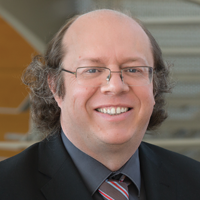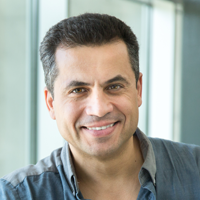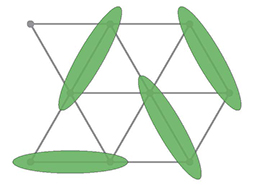Finding the Elusive Quantum Spin Liquid by Taking the Road Less Traveled
December 7, 2023
They couldn't hide forever.
With combined expertise and sophisticated tools, scientists like UT's Alan Tennant and Cristian Batista are revealing even the most well-concealed secrets of quantum materials.

Alan Tennant

Cristian Batista
Professors Tennant and Batista are part of the scientific team that confirmed the presence of quantum spin liquid (QSL) behavior in a new material: KYbSe2. QSLs are an elusive state of matter with a promising role to play in next-generation quantum information technologies. They're also notoriously hard to find.
So what, exactly, is a QSL? It's a bit of a magnetic outlier. Typical magnetic materials like iron or nickel arrange their magnetic moments (the source of their magnetic fields) in an ordered pattern. Things are messier and a bit more free-flowing in QSLs (hence "liquid" in the name). Here, magnetic moments exist in a highly entangled, fluctuating state. To complicate the picture, QSLs also come with exotic quasiparticles, which aren't actually particles but instead are the collective behavior of particles in close quarters. All this makes it extraordinarily difficult to locate a QSL state in a material.
Tennant and Batista were joined by a collaboration of scientists from national laboratories, universities, and institutes to track down a QSL by taking the road less traveled. Many studies go searching for these exotic states by looking for what's not there: missing magnetic order, for example. They decided instead to look for what they call "positive evidence"—a highly-entangled state or exotic quasiparticles. They found both in a material comprising potassium, ytterbium, and selenium by using powerful neutron science facilities at Oak Ridge National Laboratory and combined theorical, experimental, and computational resources. The findings were published in Nature Physics.
The teamwork approach to solving problems is nothing out of the ordinary for Tennant and Batista, both of whom are part of UT's research cluster on Quantum Materials for Future Technologies, the Shull Wollan Center, and the Quantum Science Center (which is one of five US National Quantum Information Science Centers run by the Department of Energy). Each of these initiatives pools resources to solve complex problems and draws on the unique convergence of scientific talent and tools in East Tennessee.
As Tennant pointed out, "Quantum problems like these are too hard for individual researchers to solve alone. The combination of the best research facilities with forefront researchers is vital and East Tennessee is starting to be recognized as a leader for this kind of team science."
 An illustration of the lattice examined by Phil Anderson in the early '70s. Shown as green ellipses, pairs of quantum particles fluctuated among multiple combinations to produce a spin liquid state. Credit: Allen Scheie/Los Alamos National Laboratory, U.S. Dept. of Energy (via ORNL)
An illustration of the lattice examined by Phil Anderson in the early '70s. Shown as green ellipses, pairs of quantum particles fluctuated among multiple combinations to produce a spin liquid state. Credit: Allen Scheie/Los Alamos National Laboratory, U.S. Dept. of Energy (via ORNL)